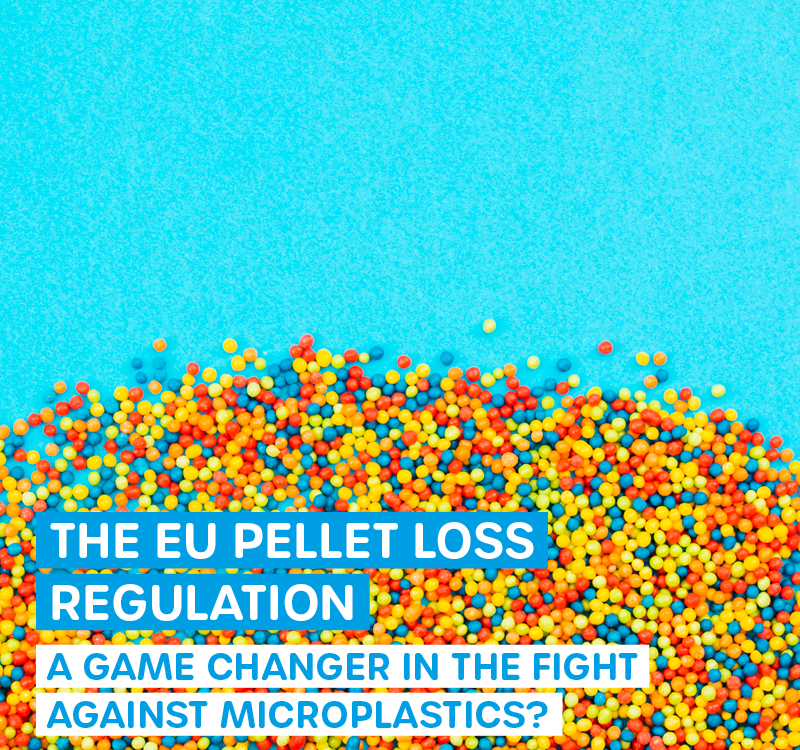
Microplastics: between panic and reality
18. July 2025
Water-soluble polymers
22. July 2025When Microplastics Don't Tell the Whole Story: The Hidden Danger of Leachables
The public debate about plastics usually focuses on the visible: plastic islands in the oceans, microplastics in fish and drinking water. But while we fixate on these tiny particles, we're missing a possibly even more serious problem – one that is completely invisible yet affects us daily.
The Chemical Time Bomb in Our Daily Lives
Leachables – this is what scientists call the chemical substances that migrate from plastics into the environment. Unlike microplastics, these are not physical particles, but dissolved chemicals that continuously escape from plastic products. From water bottles to food packaging to toys – wherever plastic encounters other materials, this invisible substance exchange takes place.
The insidious thing about it: While microplastics can at least theoretically be excreted from the body again, many leachables accumulate in our tissues. Bisphenol A (BPA), phthalates, plasticizers, and UV stabilizers migrate not only into our food but also into our hormone system.
The terms Leachables and Leachates are often confused but have different meanings:
Leachables
- Definition: Substances that can potentially migrate from a material
- Context: Determined in controlled laboratory studies under extreme conditions (aggressive solvents, high temperatures)
- Purpose: Identification of all possible migratable substances as a "worst-case scenario"
- Example: Methanol extraction at 60°C for 24h to determine all extractable chemicals
Leachates
- Definition: Substances that actually migrate under realistic conditions
- Context: Migration under normal use conditions (e.g., water at 40°C for 10 days)
- Purpose: Determination of real exposure under everyday conditions
- Example: What actually transfers into your drinking water or food
Practical Example
A plastic bottle could:
- Leachables: Release 100 different chemicals under laboratory extreme testing
- Leachates: Only 20 of these migrate into water under normal use
In Science
The Wagner-Zimmermann studies examined both:
- First Leachables (what is extractable?)
- Then Leachates (what actually migrates?)
Result: Not all leachables become leachates, but the leachates are still toxicologically relevant.
Bottom line: Leachables = theoretical maximum, Leachates = real exposure
The Scale of Chemical Complexity
The dimension of the problem only becomes visible when we consider the sheer quantity of substances involved. Plastics contain more than 16,000 different chemicals, a quarter of which are classified as hazardous. A groundbreaking study by Norwegian researcher Martin Wagner and his team from 2019 showed that 74% of the plastic productsexamined contain chemicals that trigger at least one toxic endpoint, including baseline toxicity (62%), oxidative stress (41%), and endocrine disruption.
Even more alarming: Between 17 and 8,681 relevant chemical compounds were detectable in the migrates of everyday products – meaning that between 1 and 88% of the plastic chemicals contained in a product actually leach out. Wagner's research group could only identify about 8% of all detected substances, which means that most plastic chemicals remain completely unknown.
Scientifically Proven Health Risks
The effects on environment and health are more far-reaching than long assumed. A 2024 study published in Environmental Science & Technology by Stevens et al. examined food contact materials from five countries and found that 73% of 15,430 extractable chemical compounds also migrate into food simulants. The water-ethanol mixtures showed similar toxicity prevalence as methanol extracts.
Particularly alarming are the findings on phthalates: These substances classified as endocrine disrupting chemicals (EDCs) are demonstrably harmful to the reproductive, neurological, and developmental systems. 100% of the US population has measurable levels of DEHP di(2-ethylhexyl) phthalate) – one of the most common phthalates. Studies show connections with elevated blood pressure, obesity, disrupted spermatogenesis, and premature puberty.
A 2018 study published in Scientific Reports demonstrated that exposure to phthalates in the first trimester of pregnancy already alters the placental methylome and transcriptome – with potentially lifelong consequences for offspring.
In aquatic ecosystems, the effects are equally dramatic: A Nature study from 2019 showed that plastic leachates severely impair the growth and oxygen production of Prochlorococcus – the most abundant photosynthetic organism on Earth. What counts as "low concentration" in laboratory studies can, in reality, have devastating consequences through the cocktail effect – the interaction of various chemicals.
New EU Regulation: Progress and Gaps
This reveals a fundamental problem of our chemical regulation: While limit values are now being discussed for microplastics, legislation on leachables is lagging dramatically behind – although this is currently changing fundamentally.
BPA Ban Milestone: On January 20, 2025, the new EU-Regulation 2024/3190 came into force, largely banning BPA and other bisphenols in food contact materials. Following a scientific reassessment by EFSA from April 2023, the tolerable daily intake (TDI) for BPA was reduced by 20,000-fold – from 4 to 0.0002 micrograms per kilogram body weight. The new regulation sets strict migration limits: BPA may only transfer to food in undetectable amounts (detection limit: 1 μg/kg).
Stricter Plastic Regulation: In parallel, EU-Regulation 2025/351 brings stricter purity and migration limits for plastic food contact materials. Companies must ensure by September 2026 that their materials meet high-purity requirements and undergo comprehensive migration testing.
German Implementation: In Germany, this is implemented through the Food and Feed Code (LFGB) and the Consumer Goods Ordinance. Since 2021, the ordinance contains a positive list for printing inks (Annex 14 BedGgstV) that only allows substances endorsed by the Federal Institute for Risk Assessment (BfR).
Nevertheless, the regulatory gaps are serious: While individual substances like BPA are banned in some products, the industry often switches to chemically similar but less researched alternatives. The burden of proof is reversed: The industry doesn't have to prove the safety of new additives, but science must prove their harmfulness – a process that takes years.
Innovation as a Way Out?
The development of new materials offers hope. Bio-based plastics and innovative barrier layers could reduce the leachables problem in the future. But caution is needed here too: Not everything labeled "bio" is automatically safe. Some plant-based additives can also have problematic properties.
More promising are closed-loop systems where packaging is completely avoided or replaced by mechanical alternatives. Companies like Loop or local zero-waste stores show that it's possible to do without permanent contact with leachables.
What Needs to Be Done Now
The leachables problem requires radical rethinking. If we only focus on visible microplastics, we miss the real challenge.
We need:
Stricter Regulations: Prevention principle instead of damage control. New additives should only be approved after comprehensive safety testing. The EU's REACH system must be consistently extended to all plastic additives.
Transparency: Complete declaration of all additives in plastic products so consumers can make informed decisions. The current provisions of Regulation (EC) No 1935/2004 are insufficient.
Research: Massive investments in research on leachables and their long-term effects, as well as in developing safe alternatives. The PlastChem project under Wagner shows what systematic characterization can look like – this must be expanded globally.
Awareness: Public debate must go beyond microplastics and include the chemical dimension of plastic pollution.
Immediate Measures for Consumers:
- Avoid PVC products (recycling code #3) and "other plastics" (#7)
- Reduce plastic packaging for food
- Avoid fragrance-containing products that may contain phthalates
- Use glass packaging for hot foods
Conclusion: The Invisible Crisis
Microplastics are just the tip of the iceberg. The real plastic crisis is happening at the molecular level – invisible but all the more dangerous. While we get upset about plastic straws, we consume a daily cocktail of leachables whose long-term effects are not yet foreseeable.
The new EU legislation on BPA is an important step, but only the beginning. It's time to broaden our view and tackle the plastic problem in all its complexity. Because as long as we only look at what we can see, we may be overlooking the greater threat – one that has already arrived in our bodies.






